Data Center Lighting Solutions: A full Guide in 2024 for the Electrical Contractors
Table of Contents
- Introduction
- Luminaire Performance Considerations
- Reliability and Durability
- Safety and Compatibility
- Installation and Maintenance
- Lighting Fixture Selection Checklist
- Conclusion
- Appendix: Technical Parameters and Considerations Checklists
Definition of Data Centers
A data center is a facility that centralizes an organization’s shared IT operations and equipment for the purposes of storing, processing, and disseminating data and applications. Data centers house critical systems and components that enable the continuous operation of digital services, including servers, storage systems, networking equipment, and various security devices.
Introduction
1.1 The Importance of Data Center Lighting
Data center lighting plays a crucial role in maintaining operational efficiency and safety. Proper illumination is essential for several reasons:
- Visual Clarity: Allows technicians to accurately read equipment labels, inspect hardware, and perform maintenance tasks.
- Safety: Ensures safe navigation through server aisles and helps prevent accidents in a high-stakes environment.
- Energy Efficiency: Well-designed lighting can significantly reduce energy consumption, contributing to overall data center efficiency.
- Employee Comfort: Appropriate lighting enhances worker productivity and reduces eye strain during long shifts.
- Emergency Preparedness: Reliable lighting is critical during power outages or other emergencies.
1.2 Challenges in Selecting Appropriate Lighting Fixtures
LED lighting has evolved dramatically, solving many traditional challenges in data center illumination. Its maturity brings enhanced efficiency, durability, flexibility, and maintenance considerations. However, choosing optimal fixtures still demands thoughtful analysis. The key considerations to select the right fixtures for a data center are:
| Key Point | Description |
|---|---|
| Heat Management | Although LEDs generate less heat than traditional lighting, managing heat output remains important in the temperature-sensitive data center environment. |
| Electromagnetic Interference (EMI) | Ensuring lighting systems don’t interfere with sensitive data center equipment is still a critical concern. |
| Regulatory Compliance | Adhering to industry standards and local building codes continues to be essential. |
| Smart Lighting Integration | Incorporating advanced control systems for improved efficiency and functionality. |
| Customization | Tailoring lighting solutions to specific data center layouts and operational needs. |
| Color Quality | Selecting appropriate color temperatures and color rendering indices for different data center areas. |
| Cybersecurity | Ensuring networked lighting systems are protected against potential security threats. |
| Scalability | Choosing systems that can easily adapt to data center expansions or reconfigurations. |
| Environmental Impact | Considering the full lifecycle environmental impact of lighting solutions, including manufacturing and disposal. |


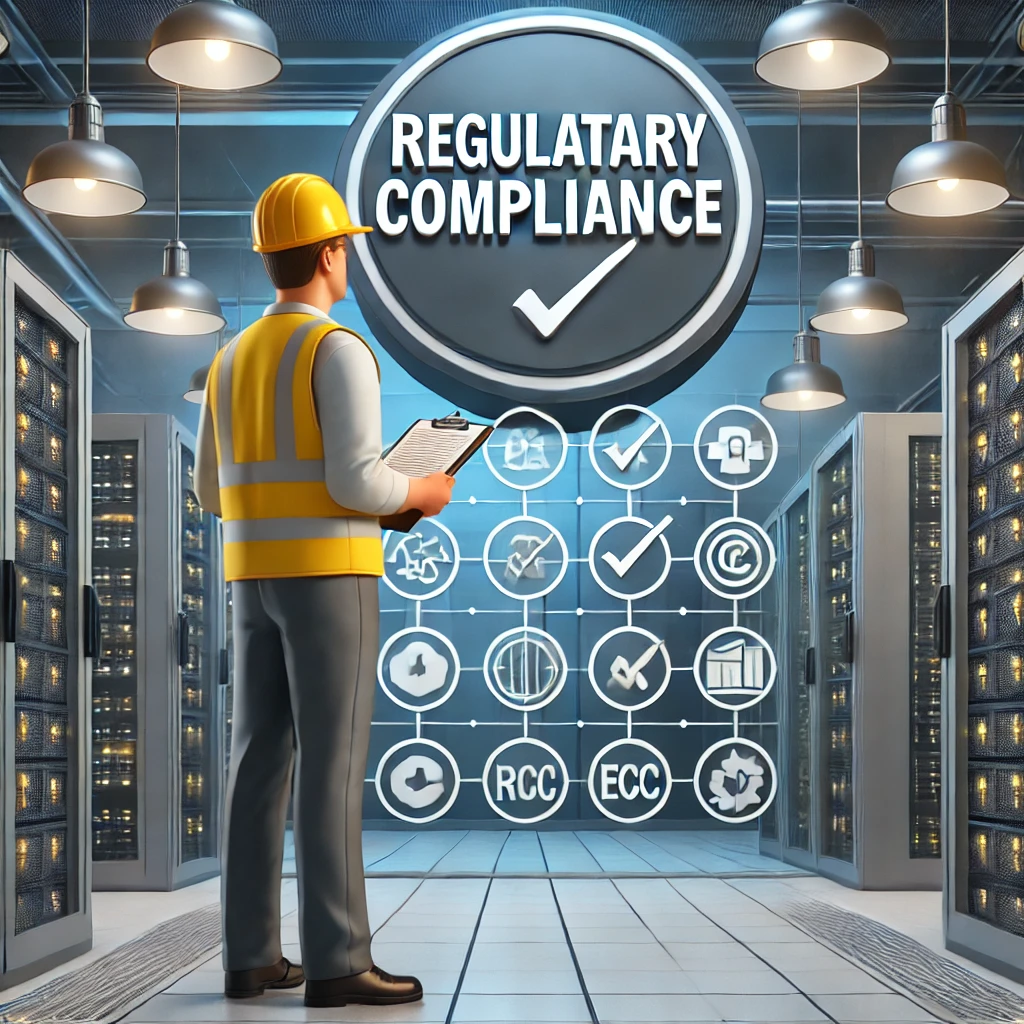
2. Luminaire Performance Considerations
When selecting lighting solutions for data centers, luminaire performance is paramount. The right lighting can significantly impact operational efficiency, energy consumption, and worker productivity. Let’s explore the key performance factors to consider:
2.1 Efficacy and Energy Efficiency
2.1.1 LED Technology Advantages
LED lighting has revolutionized data center illumination, offering unprecedented efficacy and energy efficiency. Modern LED fixtures can achieve efficacy ratings of 150-200 lumens per watt (we call it lumen efficiency, one of the key factors), far surpassing traditional lighting technologies. This high efficacy translates to significant energy savings, crucial for data centers’ operational costs and sustainability goals.
Key points: Look for LED fixtures with efficacy ratings of 150+ lm/W.
| Feature | LED Lighting | Fluorescent Lighting | Smart Lighting Systems |
|---|---|---|---|
| Energy Efficiency | High | Moderate | Very High |
| Lifespan (hours) | 50,000+ | 10,000-15,000 | 50,000+ |
| Heat Emission | Low | Moderate | Low |
| Environmental Impact | Low | Moderate | Low |
| Maintenance Cost | Low | Moderate | Very Low |
| Automation | None | None | High |
2.1.2 Lighting Standards
Illuminance Levels: According to international standards, server rooms should maintain an illuminance level of 300 lux, while hallways and control rooms might require different levels.
Emergency Lighting: Ensures pathways and exits are illuminated during power outages.
| Area | Recommended Lux Levels |
|---|---|
| Server Rooms | 300-500 lux |
| Hallways and Corridors | 100-200 lux |
| Control Rooms | 500-750 lux |
| Emergency Exits | 10-20 lux (minimum for visibility) |
2.1.3 Energy Standards and Certifications
When selecting LED fixtures, prioritize those meeting or exceeding recognized certification standards:
| Certification | Scope | Focus |
|---|---|---|
| UL (Underwriters Laboratories) – North America | Mandatory for luminaire products in the US and Canada | Safety and performance standards for electrical products |
| CE Marking – European Union | Required for products in the European Economic Area (EEA) | Safety, health, and environmental protection standards |
| UKCA – United Kingdom | Mandatory for products in the United Kingdom post-Brexit | Safety, health, and environmental protection standards similar to CE marking |
| GOST (Государственный стандарт) – Russia and CIS Countries | Обязательно для продукции, продаваемой в России и нескольких других странах СНГ | Стандарты безопасности, качества и производительности |
| SASO (الهيئة السعودية للمواصفات والمقاييس والجودة) – Saudi Arabia | إلزامي للمنتجات المباعة في المملكة العربية السعودية | معايير السلامة والجودة للمنتجات المختلفة |
| G-Mark (علامة المطابقة الخليجية) – Gulf Cooperation Council (GCC) Countries | مطلوب للمنتجات المباعة في دول مجلس التعاون الخليجي | معايير السلامة والأداء |
| ISIRI (مؤسسه استاندارد و تحقیقات صنعتی ایران) – Iran | اجباری برای محصولات خاصی که در ایران به فروش میرسند | استانداردهای ایمنی، کیفیت و عملکرد |
Additional Certifications
SAA (Standards Association of Australia) – Australia
Scope: Mandatory for electrical products sold in Australia.
Focus: Safety standards for electrical products.
BIS (Bureau of Indian Standards) – India
Scope: Compulsory for certain products sold in India.
INMETRO (National Institute of Metrology, Quality and Technology) – Brazil
Scope: Required for products sold in Brazil.
International Certifications
CB Scheme (Certification Body Scheme)
Scope: Global certification system for electrical products.
TÜV Certification
Scope: Global certification by TÜV (Technischer Überwachungsverein) organizations.
These certifications ensure the fixtures meet stringent efficiency criteria and may qualify for energy rebates or incentives.
2.2 Color Temperature and Color Rendering
2.2.1 Optimal Color Temperature for Data Centers
Color temperature significantly impacts visibility and worker comfort in data centers. The ideal range typically falls between 4000K and 5000K, providing a cool, crisp light that enhances alertness and reduces eye strain.
- 4000K: Balanced, neutral white light suitable for most areas
- 5000K: Brighter, more energizing light for high-focus work areas
- Avoid warmer temperatures (< 3500K) which can induce drowsiness
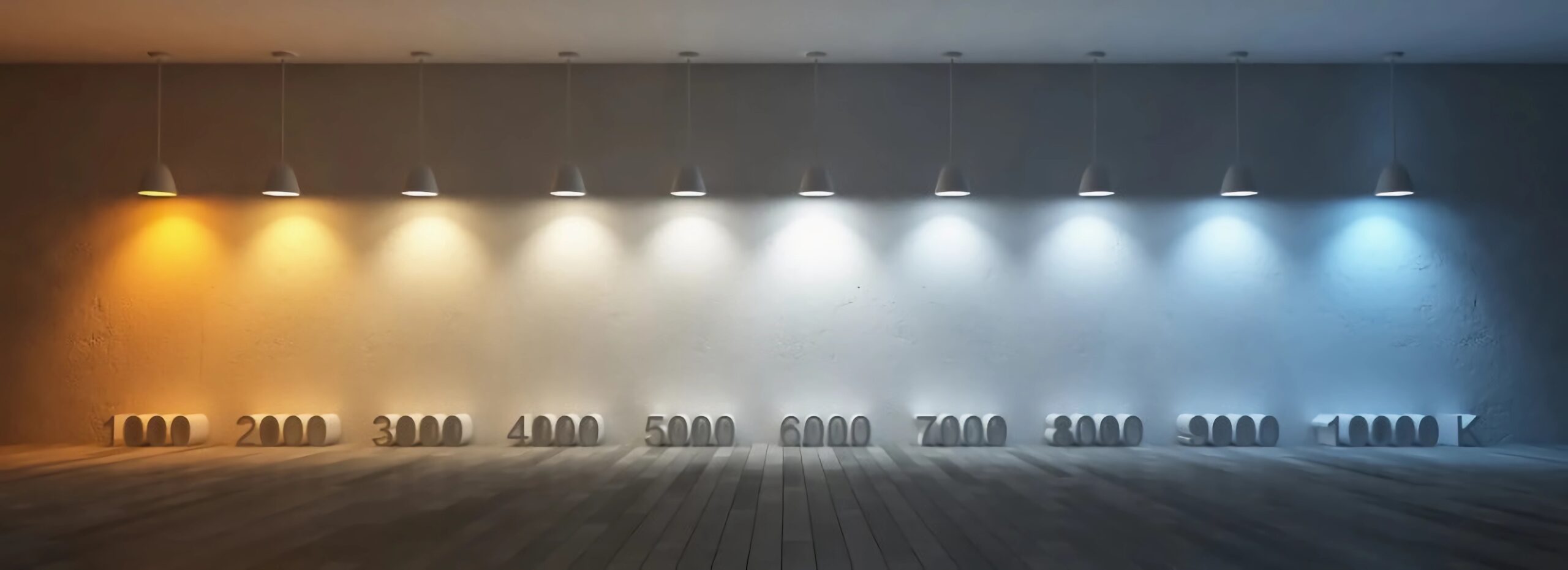
Lights colors you see is into digital number
2.2.2 Importance of High Color Rendering Index (CRI)
A high CRI is crucial for accurately distinguishing colors of cables, LEDs on equipment, and warning indicators. For data centers, aim for:
- Minimum CRI of 80
- Preferably CRI of 90+ for critical areas
Higher CRI values ensure that colors appear more natural and distinct, reducing the risk of errors during maintenance or troubleshooting.

Difference in color with 90+ CRI (left) and <60 CRI (right)
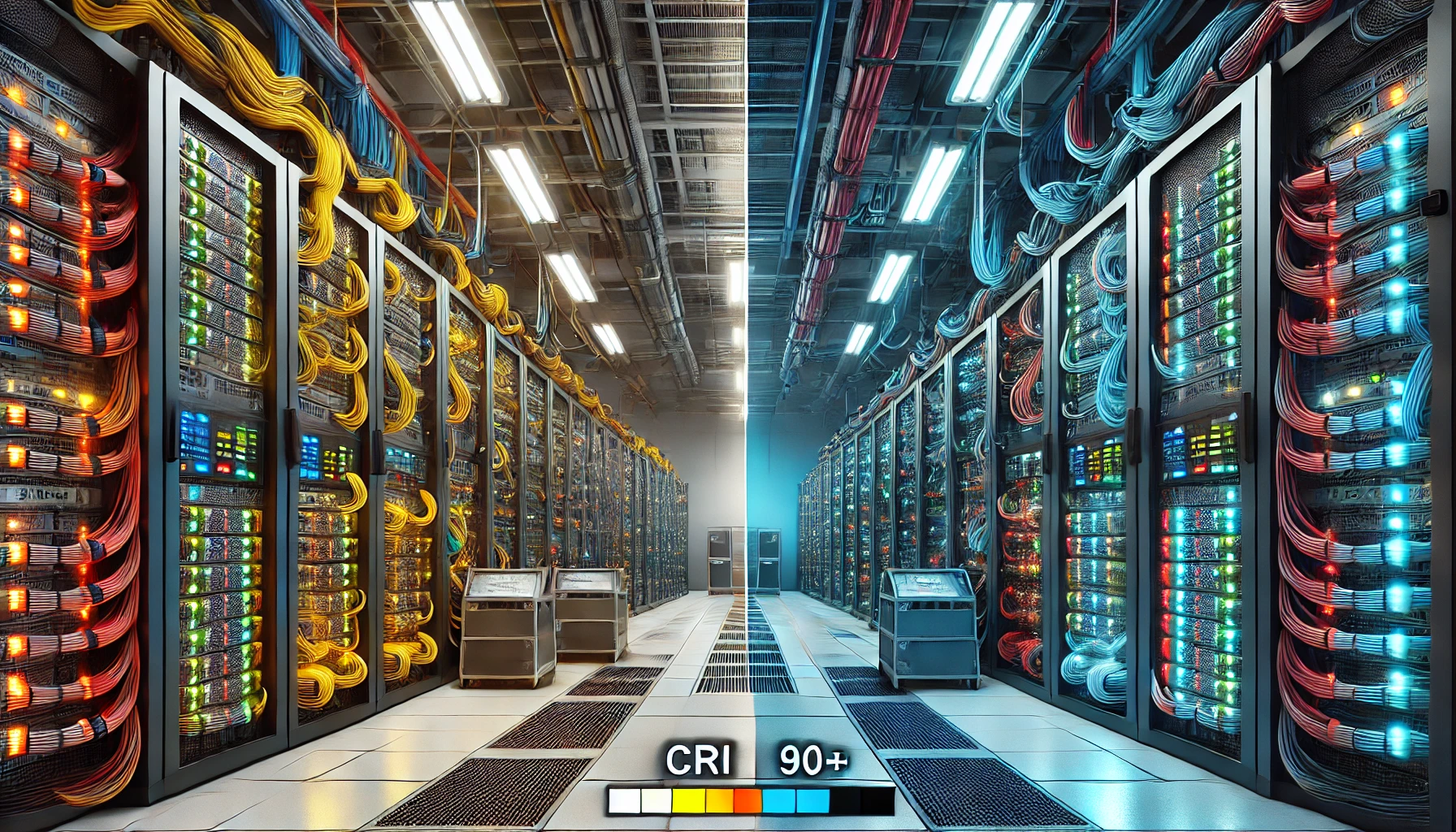
2.3 Dimming Capabilities
2.3.1 Common Dimming Protocols
Implement flexible dimming solutions to optimize energy use and adapt to varying needs:
- 0-10V: Simple, widely compatible analog dimming
- DALI: Digital protocol offering individual fixture control
- DMX: Suitable for color-changing or theatrical effects in NOC areas

O-10V Dimming / DALI control system / DMX system
2.3.2 Integration with Intelligent Lighting Control Systems
Advanced control systems can significantly enhance energy savings and functionality:
- Daylight harvesting to adjust artificial light based on natural light levels
- Occupancy sensing for automatic on/off or dimming
- Time-based scheduling to align lighting with operational patterns
- Integration with building management systems (BMS) for centralized control
By carefully considering these performance aspects, you can select LED lighting solutions that not only meet the stringent requirements of data center environments but also contribute to improved operational efficiency and reduced energy costs.
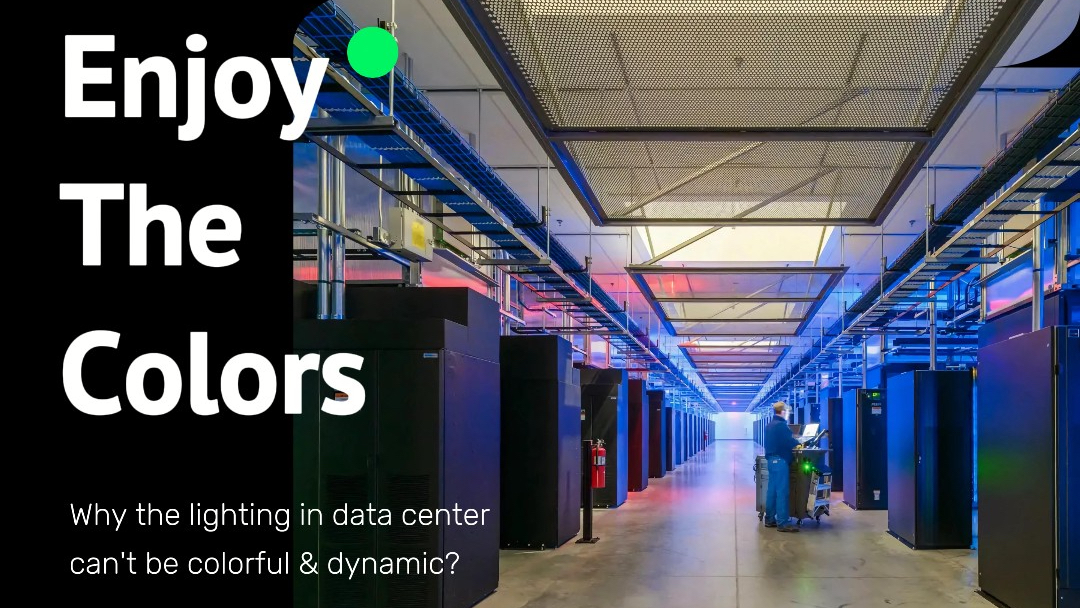
3. Reliability and Durability
3.1 Ingress Protection (IP) Rating
3.1.1 Understanding IP Ratings
IP ratings are crucial for ensuring lighting fixtures can withstand data center environments. The two-digit code indicates protection against solid objects and liquids.
For data centers, consider:
- IP50 to IP54 for general areas (protected against dust)
- IP65 or IP66 for areas with potential moisture exposure
- IP67 for areas with risk of temporary immersion (e.g., near cooling systems)
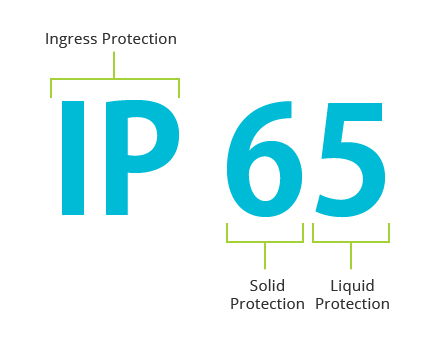
3.1.2 Impact Resistance (IK Rating)
While less common than IP ratings, IK ratings indicate a fixture’s resistance to mechanical impact:
- IK08: Suitable for most data center areas
- IK10: Consider for areas with risk of accidental impact during equipment movement
3.2 Lifespan and Reliability
3.2.1 L70 and L90 Ratings
LED lifespan is typically measured by lumen maintenance:
- L70: Time until light output decreases to 70% of initial lumens
- L90: Time until light output decreases to 90% of initial lumens
For data centers, prioritize:
- Minimum L70 of 50,000 hours
- Preferably L90 of 50,000 hours for critical areas
3.2.2 Warranty and Support
Look for manufacturers offering:
- 5-year minimum warranty
- 10-year warranty for premium products
- Responsive customer support and easy RMA processes
3.3 Thermal Management
3.3.1 Heat Dissipation Technologies
Effective thermal management is critical for LED longevity and performance:
- Passive cooling: Heatsinks with optimized fin designs
Effective thermal management is critical for LED longevity and performance in data center environments. The choice of cooling solution depends on the power requirements and budget constraints:
- Aluminum Alloy Heatsinks: Preferred for higher power luminaires due to superior thermal conductivity.
- Polycarbonate (PC) Housing: Recommended for budget-conscious projects or lower power applications.
3.3.2 Operating Temperature Range
Select fixtures rated for the specific thermal conditions of your data center:
- Typical range: 0°C to 40°C (32°F to 104°F)
- Extended range: -20°C to 50°C (-4°F to 122°F) for extreme environments
3.4 Driver Reliability
3.4.1 Driver Quality and Longevity
The LED driver is often the weakest link in fixture reliability:
- Look for drivers with MTBF (Mean Time Between Failures) of 100,000+ hours
- Ensure driver efficiency of 85% or higher to minimize heat generation
3.4.2 Surge Protection
Protect against power fluctuations common in data centers:
- Minimum 4kV surge protection
- 6kV surge protection for enhanced reliability
- Consider fixtures with replaceable surge protection modules
3.5 Vibration Resistance
Data centers often have vibrations from HVAC and other equipment:
- Look for fixtures tested to IEC 60068-2-6 standards
- Consider reinforced mounting options for areas near large equipment
By prioritizing these reliability and durability factors, you can select lighting fixtures that will perform consistently in the demanding data center environment, minimizing downtime and maintenance needs while ensuring long-term operational efficiency.
4. Safety and Compatibility
4.1 Electromagnetic Compatibility (EMC)
4.1.1 EMC Standards and Testing
Electromagnetic compatibility is crucial in data centers to prevent interference with sensitive equipment:
- Ensure fixtures comply with FCC Part 15 (US) or EN 55015 (EU) standards
- Look for fixtures tested to EN 61547 for electromagnetic immunity
- Consider fixtures with additional shielding in areas with critical equipment
4.1.2 Design Strategies to Reduce Electromagnetic Interference
- Choose fixtures with high-quality LED drivers designed for low EMI
- Opt for fixtures with metal housings for better EMI shielding
- Ensure proper grounding of all lighting fixtures and components
4.2 Emergency Lighting Functionality
4.2.1 Integrated Emergency Power Solutions
- Select fixtures with built-in battery backup providing at least 90 minutes of emergency operation
- Consider central inverter systems for larger installations or where local regulations require
- Ensure compatibility with existing emergency power systems in the data center
4.3 Electrical Safety
4.3.1 Compliance with Safety Standards
- Ensure fixtures are UL listed (US) or CE marked (EU)
- Look for compliance with IEC 60598-1 for general requirements and tests for luminaires
- Verify conformity with any additional local or regional safety standards
4.3.2 Overcurrent and Overvoltage Protection
- Select fixtures with built-in fusing or circuit breakers
- Ensure drivers have thermal protection to prevent overheating
- Consider fixtures with replaceable surge protection devices (SPDs)
4.4 Fire Safety
4.4.1 Fire-Resistant Materials
- Choose fixtures constructed with flame-retardant materials
- Look for compliance with UL94 standards for flammability of plastic materials
- Consider metal housings in areas with stringent fire safety requirements
5 Installation and Maintenance
5.1 Installation Methods
5.1.1 Mounting Options
- Recessed: Ideal for drop ceilings, minimizes dust accumulation
- Surface-mounted: Suitable for solid ceilings, easier access for maintenance
- Suspended: Offers flexibility in positioning, good for high ceilings
- Track-mounted: Provides adaptability for changing layouts
5.2 Cleaning and Maintenance Protocols
5.2.1 Dust and Debris Management
- Choose fixtures with smooth surfaces to minimize dust accumulation
- Implement regular cleaning schedules aligned with data center maintenance routines
- Consider IP65 or higher-rated fixtures in areas prone to dust or moisture
6. Lighting Fixture Selection Checklist
6.1 Technical Parameters Checklist
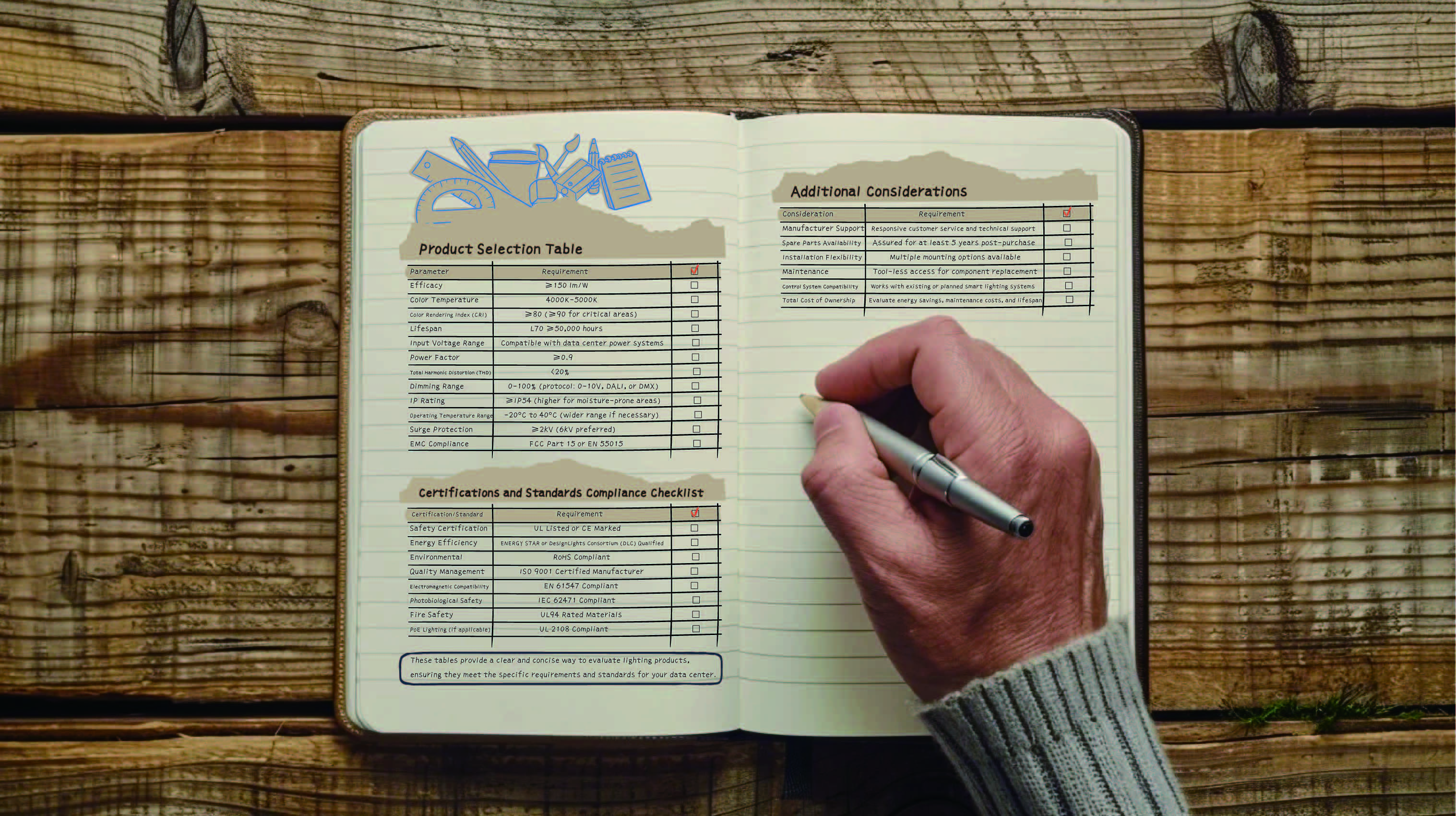
Product Selection Table
| Parameter | Requirement | ✓ |
|---|---|---|
| Efficacy | ≥150 lm/W | □ |
| Color Temperature | 4000K-5000K | □ |
| Color Rendering Index (CRI) | ≥80 (≥90 for critical areas) | □ |
| Lifespan | L70 ≥50,000 hours | □ |
| Input Voltage Range | Compatible with data center power systems | □ |
| Power Factor | ≥0.9 | □ |
| Total Harmonic Distortion (THD) | <20% | □ |
| Dimming Range | 0-100% (protocol: 0-10V, DALI, or DMX) | □ |
| IP Rating | ≥IP54 (higher for moisture-prone areas) | □ |
| Operating Temperature Range | -20°C to 40°C (wider range if necessary) | □ |
| Surge Protection | ≥2kV (6kV preferred) | □ |
| EMC Compliance | FCC Part 15 or EN 55015 | □ |
Certifications and Standards Compliance Checklist
| Certification/Standard | Requirement | ✓ |
|---|---|---|
| Safety Certification | UL Listed or CE Marked | □ |
| Energy Efficiency | ENERGY STAR or DesignLights Consortium (DLC) Qualified | □ |
| Environmental | RoHS Compliant | □ |
| Quality Management | ISO 9001 Certified Manufacturer | □ |
| Electromagnetic Compatibility | EN 61547 Compliant | □ |
| Photobiological Safety | IEC 62471 Compliant | □ |
| Fire Safety | UL94 Rated Materials | □ |
| PoE Lighting (if applicable) | UL 2108 Compliant | □ |
Additional Considerations
| Consideration | Requirement | ✓ |
|---|---|---|
| Warranty | ≥5 years (10 years preferred) | □ |
| Manufacturer Support | Responsive customer service and technical support | □ |
| Spare Parts Availability | Assured for at least 5 years post-purchase | □ |
| Installation Flexibility | Multiple mounting options available | □ |
| Maintenance | Tool-less access for component replacement | □ |
| Control System Compatibility | Works with existing or planned smart lighting systems | □ |
| Total Cost of Ownership | Evaluate energy savings, maintenance costs, and lifespan | □ |
7 Conclusion
7.1 Balancing Performance, Reliability, and Cost
Selecting the right lighting solution for a data center requires a careful balance of various factors. You should always remember that the cheapest option upfront may not be the most cost-effective in the long run. Investing in high-quality, efficient lighting can yield significant returns through energy savings, reduced maintenance, and improved operational efficiency.

